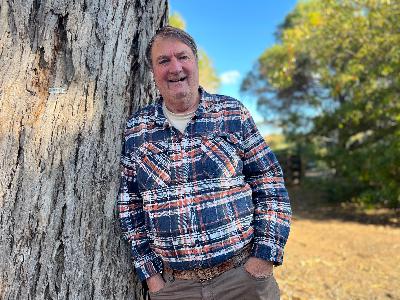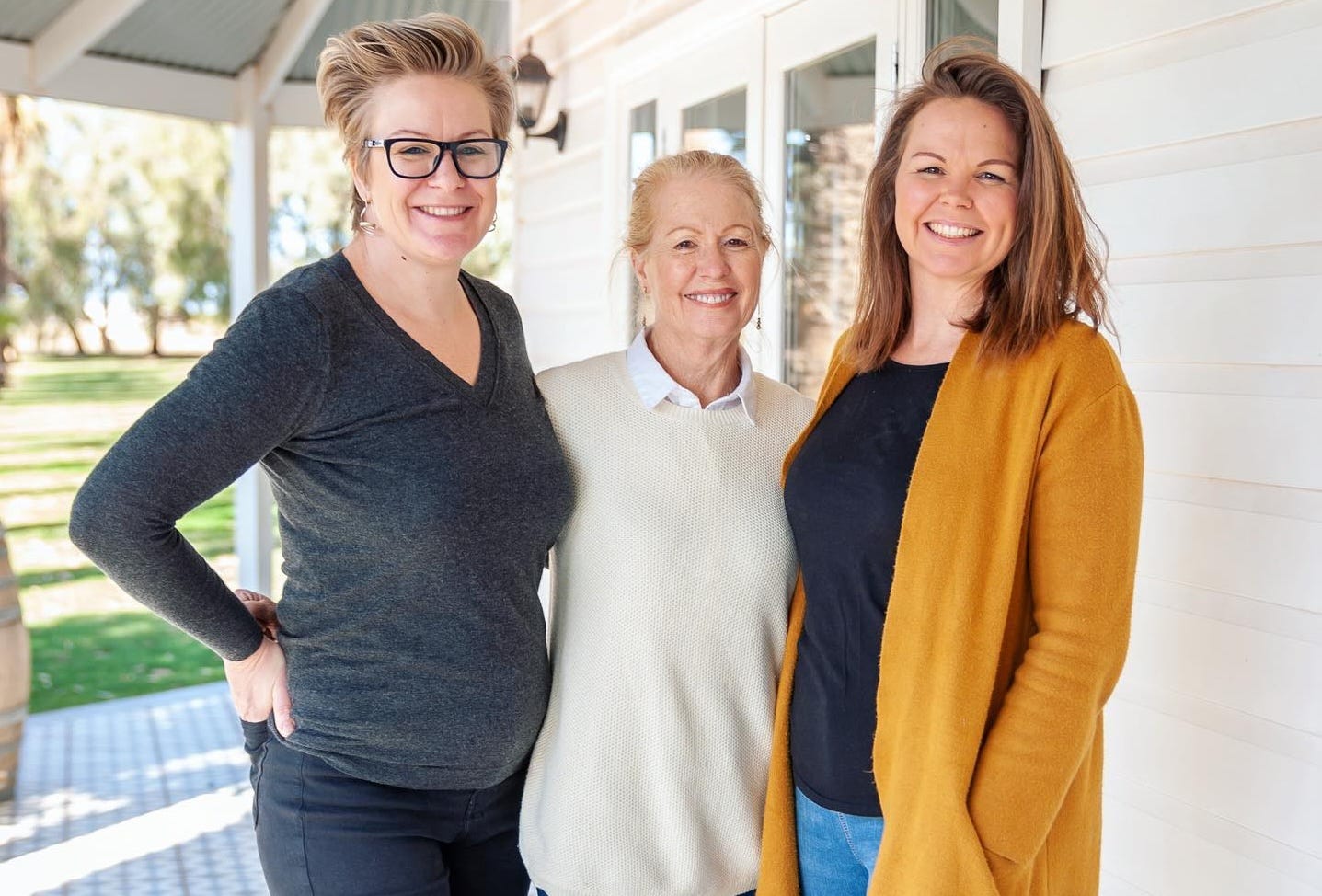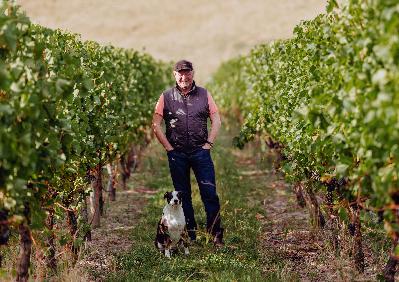Discover Vininspo! podcast
Vininspo! podcast

Vininspo! podcast
Author: Ed Merrison
Subscribed: 8Played: 65Subscribe
Share
© Ed Merrison
Description
A podcast in plain English about connection through wine—linking nature, time, place and people—to unlock its meditative, restorative, inclusive and expansive potential and brighten the experience of anyone with the vaguest interest.
edmerrison.substack.com
edmerrison.substack.com
35 Episodes
Reverse
I first heard Ginny Willcock speak about wine in Adelaide back in 2013 when I attended Savour Australia as a freelance journalist for Business Insider. This event courted wine-buyers, writers and opinion-shapers from across the globe in an attempt to reset the image of Australian wine. On an afternoon where delegates were assigned breakout sessions, I ended up in a fancy Cabernet Sauvignon tasting fronted by Gin, with Sue Hodder of Wynns also on the panel. Sue was great value, too, but Gin blew me over like a gust of fresh air. We were there, after all, because the world’s affection for Aussie wine had dimmed, and its essential, endearing Aussieness had retreated into itself. When Ginny spoke, that essential, endearing Aussieness came rollicking back like a wave rolling in from the Indian Ocean.Vininspo! is a reader-supported publication. To receive new posts and support my work, consider becoming a free or paid subscriber.The fact that we were discussing Cabernet—that most refined and distinguished of noble red grapes—with unfettered, infectious enthusiasm rather than the pomp and guff ordinarily de rigueur in these soulless dissections, heightened the effect. And Gin’s wines are immaculate. Like her, they are also brimming with energy, personality and emotion.Gin is chief winemaker at Vasse Felix, where she began working back in 2006. During that time, she’s won countless awards, including being crowned 2026 Winemaker of the Year by Halliday Wine Companion. Vasse Felix was the first estate to be planted in Margaret River, back in 1967, by Dr Tom Cullity. The Holmes à Court family now owns it, and Gin speaks warmly about her partnership with Vasse Felix owner and chief executive Paul Holmes à Court. Bart Molony, chief viticulturist and 2025 Halliday Wine Companion Viticulturist of the Year, has been at Gin’s side throughout her tenure. Heytesbury is the name of Vasse Felix’s pinnacle Chardonnay, while the Tom Cullity bottling, initially aired as an idea before Cullity’s death in 2008, became the estate’s top Cabernet cuvée from the oldest vines from the 2013 vintage. Idée Fixe is the name of this group’s traditional-method sparkling wine project.Going back in time, Ginny mentions the family farm in Bindoon, which is slightly inland, some 75km north of Perth. She also mentions her sister, Cath Willcock, a very dear friend of Vininspo! and founder of wine distributor IMBIBO. From her study days, she gives a nod to Pat Iland, a former lecturer in chemistry and viticulture at Roseworthy Agricultural College. Her friendship with Stephen Pannell, my guest on episode 30 of the podcast, has also been pivotal. Peter Leske’s name is dropped in reference to the Australian Wine Research Institute (AWRI), and the late Bryce Rankine, author of the influential work Making Good Wine, is also mentioned. Capel Vale, where she got work experience, is in WA’s Geographe region.In Margaret River phase one, the following characters appear: Mark Messenger, who was a long-serving winemaker at Juniper Estate; Clive Otto, formerly of Vasse Felix and Fraser Gallop; Conor Lagan, then of Xanadu; Bill Ullinger of Redgate Wines; and Gin’s husband Mike Gadd, then of Cullen in Wilyabrup.Kym Milne MW—I hope a future podcast guest—set Gin up with the ill-fated vintage in Albania and subsequent Italian jobs in Trento (Trentino-Alto Adige), Trapani (Sicily) and at Farnese in Abruzzo. Other jobs followed at Cloudy Bay (Marlborough, NZ), Cape Mentelle, and Evans & Tate (Margaret River), and at the contract winemaking facility run by Mike Calneggia.In present-day Margaret River, the following get a shout-out: Tim Shand (Voyager, episode 15), Julian Langworthy (Nocturne/Deep Woods, episode 28), Jo Perry (Dormilona), Dylan Arvidson (LS Merchants) and Jacopo ‘Japo’ Dalli Cani (McHenry Hohnen). Vanessa Carson (Lenton Brae) was the friend who accompanied Ginny to Spain, where the latter’s epiphany occurred at the Roda winery in Rioja.On a slightly different note, Gin talks about the Gin Gin clone of Chardonnay, for which Margaret River is known. It is particular to Margaret River, and appears to have an aroma and structure profile of its own, accentuated perhaps by the ripening conditions (although these vary considerably across the region) and by its susceptibility to millerandage (aka ‘hen and chicken’), whereby bunches have an excessively high proportion of small, seedless berries in among their plump, juicy, seeded berries. And finally, Gin’s joke about being the monks of Margaret River is an allusion to the monks of Burgundy, who observed the quality of grapes grown in different plots that subsequently became classified as, in ascending order, village, premier cru and grand cru. This is a public episode. If you'd like to discuss this with other subscribers or get access to bonus episodes, visit edmerrison.substack.com/subscribe
You'll find extensive show notes below to help clarify any details in this wide-ranging conversation. In the meantime, I'd love to count on your ongoing support to make this and other Vininspo! work possible. Here is where you can follow and share what I do.Substack: edmerrison.substack.comInstagram: @vininspo.wineYouTube: @vininspowineWebsite: www.vininspo.wineThe epithet “worthy” used to get bandied around newsrooms to describe stories about meritorious subjects that were too… worthy to be truly interesting. Optimistic, spiritual, caring and inclusive to a fault, Sue Bell could almost sound a bit worthy if it weren’t for her soulful wines, mischievous snigger and sheer feel-good factor.Sue is the person behind the Coonawarra-based Bellwether label, which she established with business partner Andrew Rennie in 2008. She became sole owner in mid-2025, describing herself at the time as “excited and terrified”. We talk about that in our conversation, as well as the community that has developed around the Bellwether’s HQ, the historic Glenroy Shearing Shed. Among other accolades, Sue was named Australian Society of Viticulture and Oenology Winemaker of the Year in 2014. You can taste her wines at the shed, which also offers camping and glamping options and hosts various events. I’m pleased Sue shared her wisdom on a fair bit of unsung geography, covering a fair bit of ground—literally—around the South Australia/Victoria border. I hope that listeners might look out for these regions on wine labels and maybe even pay them a visit. These include Coonawarra itself, as well as Mount Gambier, Mount Benson, Padthaway and Wrattonbully. The Kanawinka Fault is the geological fault line that stretches from Portland in Victoria to Naracoorte in South Australia, where you’ll find the World Heritage-listed caves. The Bonney Upwelling is the oceanic phenomenon that has a crucial influence on local grape-growing conditions.As so often when mapping the trajectory of my guests, a galaxy of Aussie wine stars has plotted Sue’s path to where she is today. From McLaren Vale, she mentions early experience at Noon, Woodstock and Primo Estate, with Primo’s Joseph Grilli offering some particularly valuable advice.From her days at Southcorp, which has morphed into Treasury Wine Estates. She worked under Wayne Falkenberg at the Karadoc winery in Mildura (Corrina Wright in episode 28 and more so PJ Charteris in episode 8, talk about formative experiences here), Rouge Homme in Coonawarra, Seppelt Great Western (where she worked with great friend Kate Goodman) and Magill Estate (Penfolds). The late Neville Falkenberg was her boss on the Penfolds white team, where she worked alongside PJ Charteris, Steve Chapman, and others. From this period, she also mentions a viticulture placement in Eden Valley with Allen Jenkins, well known for his work at Wynns, and Suzi Hilder, now of Smallfry in the Barossa.Sue’s cohort at Hardys has also come up a lot in this show. Many have praised Peter Dawson’s influence, while other members of the gang include past podcast guests Stephen Pannell (S.C. Pannell), Rob Mann (Corymbia), Anna Flowerday (Te Whare Ra) as well as Kerri Thompson (Wines by KT, Clare Valley), Fran Austin (Delamere, Tasmania), Alex McKay (Collector, Canberra District), Ed Carr (House of Arras) and communications specialist Bec Hopkins. Tom Newton gets a nice mention; he was with the Hardys group for 36 years, finishing up as Accolade’s Group White Winemaker in 2018. Eileen Hardy is the prestige label of the Hardys portfolio (now owned by Vinarchy), while Bay of Fires is a Tasmanian brand in the same group. B*****d Hill, meanwhile, is a Yarra Valley vineyard now owned by Jackson Family Wines, whose Giant Steps brand is producing single-site wines from here.Sue speaks of the trip she took as dux of the Len Evans Tutorial after she left Hardys. LET is the annual scholarship experience held in the Hunter Valley, NSW, since 2001 and dubbed “the best wine school on earth”. That same year, she had a fateful conversation with Mike Brajkovich MW of Kumeu River in New Zealand. Having established Bellwether, Sue credits the help of the Australian Wine Research Institute (AWRI) as an invaluable source of information and support for the nation’s producers.Other names that crop up are Ashley Ratcliff of Ricca Terra in the Riverland and the Chalmers family in Mildura (hear more about the latter in this episode). Meanwhile, Sue mentions Louise Hemsley-Smith (Battle of Bosworth), Louisa Rose (Yalumba) and Rebecca Wilson (Bremerton) in the segment on Sips in the Sticks. This is a public episode. If you'd like to discuss this with other subscribers or get access to bonus episodes, visit edmerrison.substack.com/subscribe
It’s weird and fitting that the first serious comment on a wine blog I wrote came from Stephen Pannell. The lack of preceding remarks speaks volumes about the anonymity in which I was operating; the fact that the most decorated winemaker of his generation deigned to pipe up says a lot about how much he cares.If you enjoy original work & want to keep this kind of thing alive, please consider becoming a free or paid subscriber to Vininspo!I was in a hotel room in Milan when Steve’s message popped up in response to a Nebbiolo post I’d written that featured a wine of his—a 2010 Nebbiolo. He said something modest and grateful and told me I needed to see Massolino in Serralunga d’Alba while I was in that part of the world. As it happened, I’d already lined up an appointment for the next day; it was a happy coincidence that made me love Nebbiolo that little bit more.I have since had the pleasure of interviewing Steve several times, representing his wines and following his various, exceptionally ambitious projects very closely. During that time, he has won Australia’s most prestigious wine award, the Jimmy Watson Memorial Trophy, for the second time, been named Australian Winemaker of the Year, established a cellar door in McLaren Vale and bought four vineyards that individually specialise in Mediterranean varieties, Nebbiolo, Grenache and warm-climate Shiraz. He is a universally recognised flag-bearer for either the emergence or renaissance of each of those categories in Australia, with a reputation that extends far beyond these borders.Thanks to Steve’s patience and openness, we cover all of this, and his extraordinary trajectory, in our conversation. Protero is his sole vineyard outside McLaren Vale. This Adelaide Hills site has Nebbiolo as the headline act alongside other northern Italian varieties. The S.C. Pannell cellar door and Portuguese, Iberian and southern Italian varieties are on Oliver’s Road. The Shiraz, including the wine that won the 2026 Halliday Wine Companion Best Shiraz of the Year, grows on his Koomilya Vineyard. Little Branch—an anglicised version of Lindquist, the maiden name of Stephen’s wife, Fiona—is his 100-year-old Grenache vineyard.Fiona is given a fitting tribute here, as is Steve’s general manager, Tom Grant. His distributor, Patrick Walsh, is mentioned, too (he’s the other Depeche Mode fan alluded to). Patrick is the founder of CellarHand, for which I work, and was himself interviewed for episode four. A mutual Barolo connection exists here. G.D. Vajra is the winery that Steve worked for, and he speaks at length of his relationship with its owners, Aldo and Milena Vaira. CellarHand and S.C. Pannell import these wines into Australia. Another pseudo-Italian connection is David Gleave MW, who is in fact the Canada-born, UK-resident founder of Liberty Wines. David also established Willunga 100, a McLaren Vale Grenache specialist featured here. David Ridge is an Australian importer of Italian wine. Paolo de Marchi, meanwhile, is synonymous with the great Chianti Classico estate. Isole e Olena.Steve is the son of Bill and Sandra Pannell, who founded Moss Wood in Margaret River and went on to establish Picardy in Pemberton, Western Australia. His early French connections include the late Burgundy broker Becky Wasserman-Hone, Dominique Lafon of Domaine des Comtes Lafon in Meursault, Bertie Eden of Château Maris in the Languedoc, Jacques and François Lurton, and the late Gérard Potel, then of Domaine de la Pousse d’Or in Volnay. Steve also pays tribute to his dear friend Nicolas Potel, founder of Domaine de Bellene, who died in June this year.A whole host of Australian characters come up in this conversation. Steve first met Petaluma founder Brian Croser when he was a kid in WA; likewise, the late Len Evans, whose famous tutorial (“the greatest wine school on earth”) is also discussed. Huon Hooke is the wine writer he worked alongside in Sydney, and Jim Whittle, who died in 2014, was their larger-than-life Sydney retail manager.Among Steve’s cohort at Roseworthy Agricultural College were Virginia Willcock of Vasse Felix, Peter Gago of Penfolds (an interesting perspective on young Gago here), Reid Bosward, Wendy Stuckey and Nick Haselgrove. Hardys was another incredibly formative experience for Steve—this is where he won his first Jimmy Watson for the 1995 Eileen Hardy Shiraz. Anna Flowerday, my guest on episode 13, spoke about this golden age of Hardys talent overseen by Tim James and Peter Dawson, and including the likes of Larry Cherubino, Rob Mann (Corymbia) and Kerri Thompson (Wines by KT).Other names mentioned in passing include: Wendouree, the legendary Clare Valley estate whose character, as expressed by custodians Tony and Lita Brady, has so influenced Steve; Adelaide Hills wine-grower Tim Knappstein (who enjoys a cameo here and here); Warren Randall, owner of Seppeltsfield in the Barossa; English-born, South Australia-based wine writer Tim White; Simon Benjamin, co-founder of Iberia-inspired Bar Lourinhã in Melbourne; and Mark Lloyd, who has long been a frontrunner with alternative varieties with his beautiful family estate, Coriole, in McLaren Vale. This is a public episode. If you'd like to discuss this with other subscribers or get access to bonus episodes, visit edmerrison.substack.com/subscribe
While Italian footballers are known for their histrionics, Trembath & Taylor has scored goals and won fans while sparing us the theatrics. Arguably Australia’s foremost importer of Italy’s wines plays the game with no shortage of passion, but has passed it on to a legion of converts in a refreshingly low-key manner.Vininspo! is a reader-supported publication. To receive new posts and support my work, consider becoming a free or paid subscriber.The rock-star billing of Brunello, Barolo, Barbaresco et al makes it hard to believe that the wines of Italy were playing to tiny crowds 30 years ago, when Trembath & Taylor started out. Matt and I cover their trajectory and modern trends extensively in this conversation. Inevitably, we cover several regions, grapes and styles. Some may be new to you; that’s part of the point. One aim of my Substack is to be a one-stop shop for fostering curiosity and answering it… but I haven’t really got started with the educational materials. Still, Matt fleshes out many of the points; where you’re left wondering about anything, please leave a question in the comments.I will try to pick out a few key mentions to help you navigate further reading. Matt mentions a host of local personalities when talking about this formative experience at The George Hotel in the Melbourne seaside suburb of St Kilda. These include the late restaurateur Donlevy Fitzpatrick, who created The Melbourne Wine Room with Maurice Terzini, Karen Martini, and Michael Sapountsis—all of whom became prominent figures in the Australian dining scene. Other members of the cast include winemakers Barney Flanders (check out his excellent Garagiste label) and David Chapman (ditto for Allies), as well as wine writer Marcus Ellis.A few acronyms crop up when we discuss education. A few acronyms often appear in discussions about Italian wine classification. DOC stands for Denominazione di Origine Controllata (Controlled Denomination of Origin), DOCG for Denominazione di Origine Controllata e Garantita, and IGP for Indicazione Geografica Protetta (Protected Geographical Indication; previously known as IGT, where the T stands for Tipica). IGP wines generally allow greater freedom in the choice of grape varieties, sourcing, and methods of harvesting, vinification, and maturation. Stricter regulations govern DOC and DOCG wines, and while DOCG is often assumed to indicate higher quality, this isn’t the case—it all depends on the specific DOC or DOCG, as each sets and enforces its own rules.Matt refers to WSET (the Wine & Spirit Education Trust), the London-based organisation for which I am an accredited educator, and which has a significant global presence through its structured courses, ranging from Level 1 to 4. I have interviewed a couple of other educators—Andrea Pritzker and Meg Brodtmann—both of whom happen to be MWs, and the Master of Wine program also comes up in our conversation. Kate McIntyre MW is the person for whom he filled in at Trembath & Taylor. Kate’s family winery is Moorooduc Estate on the Mornington Peninsula.Todd Slater and Iona Baker are the sales staff members mentioned. Both previously worked in restaurants with serious Italian credentials, the former with Stefano Manfredi in Sydney and the latter with Guy Grossi in Melbourne.Quite a few producers are namechecked. These include Hofstätter in Alto Adige and Brancaia in Tuscany, which produced the first two Italian wines Matt tasted: Pinot Nero and the Il Blu Merlot blend, respectively. Other names include Ottin (Valle d’Aosta), Marcarini, Poderi Colla, Chiara Boschis, Conterno Fantino (Piemonte), Pieropan, Speri (Veneto), Damiano Ciolli (Lazio), Costanti, Fuligni and Poggerino (Tuscany).Last, here are a few of those more obscure grape varieties to track down: Prié (Aosta), Timorasso and Cortese (Piemonte), Rossese di Dolceacqua (Liguria), Ciliegiolo (Tuscany), Cesanese (Lazio), Carricante, Grillo, Catarratto, Frappato, Nerello Mascalese (Sicily). This is a public episode. If you'd like to discuss this with other subscribers or get access to bonus episodes, visit edmerrison.substack.com/subscribe
The first time I met Corrina Wright, she was done up in Viking garb and grinning like a Cheshire cat. It was Melbourne’s inaugural Game of Rhônes tasting, a celebration of all things Grenache, Shiraz et al, and one of those too-rare wine events where a cheerful disposition is de rigueur. But even Corrina’s resting b***h face is probably a big, warm smile. Injustice and inanity are enough to wipe it off, but only for as long as it takes for her to speak up, pitch in and set it straight.Vininspo! is a reader-supported publication. To receive new posts and support my work, consider becoming a free or paid subscriber.Corrina’s ancestors, William and Elizabeth Oliver, left Scotland for McLaren Vale in late 1839 and established two properties that remain in family hands. Corrina Wright (née Rayment) is a member of the sixth generation to work the land here, and the first to make wine under the family label, Oliver’s Taranga. It’s a full family affair, with several relatives involved in the business, including her cousin Brioni Oliver. Together, they produce a range of first-rate wines, from McLaren Vale’s red staples of Shiraz and Grenache to an array of modern iterations of alternative varieties that have found such a happy home in this beautiful area’s warm Mediterranean climate.One of those grapes is the Campanian native white, Fiano, and we spoke in the week preceding Australia’s first-ever Fiano Day. Corrina was the spearhead for this informal celebration of an increasingly popular vine variety.As you listen to the interview, you’ll learn not to be surprised to see Corrina leading from the front. We talk about the many community roles she takes on. She is the president of the Australian Alternative Varieties Wine Show (AAVWS) committee, and regular listeners will have heard me discuss this movement with the likes of Jeff Porter, Kim Chalmers and Max Allen. She is also on the action board of Australian Women in Wine. We discuss this organisation and its own awards, an initiative begun by Jane Thomson OAM, founder of The Fabulous Ladies’ Wine Society.Corrina has also served on the boards of the Winemakers’ Federation of Australia, McLaren Vale Grape, Wine & Tourism Association and the Australian Society of Viticulture & Oenology. In other acroynym news, she was ASVO Winemaker of the Year in 2019, and still sits on the board of the Australian Wine Research Institute (AWRI), which runs the Advanced Wine Assessment Course (Awac). We discuss Awac in the section about training your palate.Corrina talks about studying at Roseworthy, an institution that has come up in many of these podcasts—not least with PJ Charteris, who also gives further insight into Southcorp, Penfolds and Karadoc. Among Corrina’s cohort were the likes of Pete Fraser (Yangarra), Andy Coppard (Lino Ramble), Tony and Briony Hoare (Beach Road Wines), Ben Glaetzer (Glaetzer Wines) and Sue Bell (Bellwether). She also studied at UC Davis in the US, where she came into the orbit of chemical engineer Roger Boulton, sensory scientist Ann Noble, and Nick Dokoozlian of Californian wine giant Gallo. Another American mentioned is the hugely influential critic, Robert Parker, founder of The Wine Advocate.Somewhat more leftfield is the superb story of Corrina’s Ihana wine collaboration with Finnish F1 driver Valtteri Bottas. This is a public episode. If you'd like to discuss this with other subscribers or get access to bonus episodes, visit edmerrison.substack.com/subscribe
Some people don’t even believe there’s a vineyard there, let alone the site that spawned a second coming for one of the country’s most hallowed cool-climate regions.Reg Egan was working as a lawyer when he decided to plant a vineyard in the Yarra Valley in 1963. The site he chose was not far from his Melbourne practice—so close, in fact, that he was sure he’d have to sell it in the medium term. He had a contingency for that, which didn’t work out as he’d expected. That’s a fascinating anecdote covered in this interview with his younger daughter, Maryann.By the mid-1980s, Reg had given up the law and was working on the vineyard full-time. The mélange of varieties he’d started with eventually whittled itself down to a range of four wines, named for his granddaughters: Amelia (Chardonnay), Lily (Pinot Noir), Amelia (Cabernet Sauvignon, Cabernet Franc, Merlot and Petit Verdot) and Hannah (Cabernet Franc/Merlot).Those are the daughters of his daughters, Liz and Maryann Egan. Liz went on to become a celebrated chef and restaurateur, while Maryann studied wine, working patchily among the vines in her early years before assuming the helm at Wantirna Estate over the past couple of decades.We touch on other icons of the Yarra Valley here. Maryann mentions being good friends with Sandra de Pury, the fourth-generation winemaker at Yeringberg. This storied estate was founded in 1863 and underwent a significant hiatus during the Yarra’s post-Great War dormant period. Maryann also mentions Sam Middleton, third-generation vigneron at 1971-founded Mount Mary.Sam’s grandfather, Dr John Middleton, and his wife, Marli, were among a legendary quartet of friends, along with the Egans, Ian and June Marks of Gembrook Hill and Dr Peter and Margaret McMahon. You can read more about this foursome here. Suffice to say, each of them has had a tremendous impact on notions of the quality potential and terroir stamp of Australian wines.Another doctor features in this piece: Bailey Carrodus. Reg and Bailey planted the vineyard that would become Yarra Yering—another top-flight Australian producer. How that panned out is quite some story, but not widely known.When it comes to Maryann’s own career, she worked a harvest at Tyrrell’s, one of the greats of the Hunter Valley, NSW, and there met Wayne Donaldson. The latter was the first winemaker at Domaine Chandon, the Yarra Valley bubbly outpost of LVMH, owner of Champagne house Moët et Chandon. During her six-year stint at Chandon, Maryann’s boss was influential Aussie sparkling-wine pioneer Tony Jordan, who passed away in 2019.Vininspo! is a reader-supported publication. To receive new posts and support my work, consider becoming a free or paid subscriber.After leaving Chandon to have her two children, Maryann scored a presenting role on the television show Wine Lovers’ Guide to Australia alongside co-hosts Grant Van Every and Pria Viswalingam. Australian residents can still stream both series of the programme, which first aired in 1999, on SBS on Demand.Maryann speaks with fondness of visiting winemakers on her travels, and credits Melbourne fine-wine merchant Prince Wine Store and CellarHand, Wantirna Estate’s Australian distributor (for whom I work), with setting up some of those connections. The trio of wonderful women we name-check are Virginie Taupenot of Domaine Taupenot-Merme in Morey-Saint-Denis, Elsa Matrot in Meursault (both in Burgundy’s Côte d’Or) and Claudia Cigliuti of Barbaresco producer Cigliuti. This is a public episode. If you'd like to discuss this with other subscribers or get access to bonus episodes, visit edmerrison.substack.com/subscribe
Julian Langworthy first struck me as the embodiment of happy-go-luckiness. A healthy irreverence, ready quip and loud laugh were standard issue, and he seemed to be breaking and losing more trophies than anyone else was winning.I was the Victorian chair of Wine Communicators of Australia when Julian’s 2014 Deep Woods Estate Reserve Cabernet Sauvignon won the Jimmy Watson Memorial Trophy at the Melbourne Royal Wine Awards. No wonder he looked like the cat that got the cream at the awards lunch we organised; Australia’s most prestigious wine trophy came with a $20,000 cheque to do whatever he liked to “further his wine education”. We talk about that on the podcast.Around the same time, Julian brought his own Nocturne wines to us at CellarHand, in the hope that we would agree to be the brand’s first Australian distributor. We said yes. The wines—a single-vineyard Margaret River Chardonnay, Cabernet and rosé back then (the rosé has since migrated to the subregional range)—were excellent, and there was no chance that you’d let this combination of charisma, ambition, ebullience and prowess slip through your fingers.Julian’s day job is chief winemaker and general manager of Deep Woods Estate, which is the linchpin of the Fogarty Wine Group (FWG). We discuss Deep Woods at length, from his unorthodox hiring by owner Peter Fogartry to the operations of the group, which owns vineyards and brands across four Australian states, including Dalwhinnie in Victoria, Lowestoft in Tasmania and Lake’s Folly in NSW.We talk a bit about trophies, and I suggest we shouldn’t be blasé about the wins. Nor am I exaggerating this aspect of Julian’s career. Nocturne itself has picked up its fair share of silverware, while Jules has been crowned Halliday Wine Companion Winemaker of the Year and picked up the Len Evans Trophy, Stodart Trophy, Max Schubert Trophy and Decanter World’s Best Cabernet. Deep Woods has won more than 60 trophies and 200 gold medals on his watch—and FWG more broadly is a constant presence on the podium under his overall guidance.Jeff Burch of Howard Park Wines is also mentioned in connection with Julian’s move to Deep Woods in his native Margaret River. That same hallowed region is home to several world-famous producers. Julian refers to the “founding families”, an informal term covering the likes of Cullen, Leeuwin Estate, Cape Mentelle, Vasse Felix and Moss Wood. The so-called “cool kids” mentioned as having managed to join that first rank include Stella Bella and Xanadu.From Adelaide University days, Julian mentions erstwhile bottleshop colleague Sophie Otton, now a Sydney-based bar owner, sommelier, wine judge and writer. His lecturers included sensory evaluation specialist Patrick Iland, viticulture guru Peter Dry and Clare Valley icon Jeffrey Grosset, one of Australia’s foremost Riesling growers. Among Julian’s winemaking student cohort were Peter Dillon of Handpicked (married to winemaker Imogen Dillon of Ten Minutes by Tractor on the Mornington Peninsula), Peter Dredge of Dr Edge in Tasmania, former Bleasdale winemaker and Jimmy Watson winner Paul Hotker, Anna Pooley of Pooley Wines and Bubb + Pooley in Tasmania, and Dan Stocker of Heretic Wines in Margaret River.It was at Wolf Blass that Julian first took telling steps in a winery role (and where Chassagne-Montrachet-based white Burgundy legend Pierre-Yves Colin was somewhat incongruously hanging around!). The Barossa winery was part of Beringer Blass and has now been subsumed into Treasure Wine Estates. Jules moved to Coonawarra within that same group, working at Jamiesons Run and then at Wynns Coonawarra Estate. The community members namechecked there include Emma Bowen of Bowen Estate, Dan Redman of Redman Wines and Dru Reschke of Koonara Wines. Last, but certainly not least, are a couple of hugely influential mentors at Wynns. One is Greg Tilbrook, the other the much-admired Sue Hodder, who herself has won just about every accolade as senior winemaker for this bastion of Australian Cabernet. This is a public episode. If you'd like to discuss this with other subscribers or get access to bonus episodes, visit edmerrison.substack.com/subscribe
I vividly recall my first meeting with Kathleen Quealy. I had tasted and delighted in her Pobblebonk field blend of Friulano, Riesling and Pinot Gris, and followed it up with the Rageous red, an unlikely marriage of Sangiovese, Shiraz and Pinot Noir. Among the Mornington Peninsula’s calm little sea of Chardonnay and Pinot Noir, these outlandishly named, labelled and assembled interlopers smacked of anarchy.Rocking up at Balnarring Vineyard felt like landing in the outskirts of an Irish country town where time stands still. A charmingly ramshackle, take-us-as-you-find-us backyard of ambling hens, drying washing, bicycles and bric-a-brac announced, fittingly, the home of the Quealy-McCarthy clan.That wasn’t your average interview. Unfiltered, unguarded candour and randomness spilt out, and I learned and laughed a lot. We’ve spoken a lot in the intervening years, but this episode 25 of Vininspo! podcast still felt like the first time.Max Loder was the viticultural lecturer and Pinot Gris advocate who influenced Kathleen during her time at what is now the Charles Sturt University campus in Wagga Wagga, NSW. Her husband, Kevin McCarthy, did his winemaking studies at Roseworthy Agricultural College (discussed at length here). T’Gallant is the name of the winery they founded on the Mornington Peninsula in 1990. Thirteen years later, they sold it to Southcorp, which was subsumed by Fosters and morphed into Treasury Wine Estates. TWE sold T’Gallant in 2022; it has since reopened under new ownership and continues to operate from its Main Ridge home.Kathleen was dubbed the Queen of Pinot Gris by the renowned Australian wine commentator James Halliday, for whose Coldstream Hills estate Kevin McCarthy worked in the Yarra Valley in the mid-1980s. Her range has bottlings labelled Grigio and Gris; generally speaking, Australian producers use the Italian styling to denote a crisper, lighter-bodied rendition that leans towards the grape’s airier aromas and lightly fruity side. Gris, from the French for “grey”, tends to denote a riper, more richly textured rendition with more spice and earthy, exotic aromas.On the subject of Pinot Gris, I reference Max Allen’s book, Alternative Reality, which Max and I discussed on episode 24. The Chalmers family is central to that book and crops up when Kathleen and I discuss sourcing so-called alternative grape varieties. The best place to hear more about that fascinating area is by tuning into episode 17 of the podcast with Kim Chalmers.Quealy Winemakers is based at the organic-certified Balnarring Vineyard on the Mornington Peninsula. Its range of wines takes in Pinot Noir and Chardonnay—the region’s most celebrated grapes—and much more besides. The diverse and distinctive label artwork by celebrated designer Ken Cato is in keeping with this estate’s singularity.Kathleen is justly proud of the progress her son, Tom McCarthy, has made. Tom’s range of skin-contact wines is called Turbul. It began over a decade ago with a Friulano that spent an extended period of time in contact with its skins to become a so-called orange or amber wine. As mentioned, this range has grown to four wines, with Malvasia, Ribolla Gialla and Moscato Giallo entering the fold. They are proper, considered, fully realised wines of intent; I urge you to watch this video and seek them out. While these wines take their cue from traditions around the border of Slovenia and northeast Italy, Tom has also followed in footsteps closer to home; in 2008, Kevin McCarthy’s T’Gallant Claudius gave Australia its first fully committed amber wine from Chardonnay, Traminer and Moscato Giallo. This is a public episode. If you'd like to discuss this with other subscribers or get access to bonus episodes, visit edmerrison.substack.com/subscribe
Not starting with an end in mind has led this English-born, multi-award-winning writer to unearth profound connections down labyrinthine rabbit holes.Max Allen is too young to be deemed a national treasure, but that’s what he is. In a field where the esteem in which commentators are held is generally a measure not of perspicacity or originality but of perceived influence on potential sales, Max’s gift—and thirst—for meaningful storytelling is a rare and precious thing.Max is an award-winning journalist and author who earns a crust as drinks columnist for the Australian Financial Review (AFR), is a longtime contributor to Gourmet Traveller Magazine, and serves as the Australian correspondent for jancisrobinson.com. He has written several books about wine, some of which are discussed in our conversation and require a bit of context here.The latest of these is Alternative Reality (2023), which tells the story of the Australian Alternative Varieties Wine Show (AAVWS). I quote a section from the book’s preface, written by Mildura-based chef and show founder Stefano de Pieri. For more on the show’s origins, please listen to episode 17 with Kim Chalmers.We also speak at length about Intoxicating: Ten drinks that shaped Australia (2020). Way-a-linah is the indigenous drink that kicks off the book, and pretty much the only way you’ll find out more about it is to read Intoxicating—which I suggest you do, because it’s an original and engrossing book that showcases Max’s specific talent for teasing out meaning.Other books mentioned are The Future Makers: Australian Wines for the 21st Century (2010) and Red and White: Wine Made Simple (with photographer Adrian Lander, 1997). We discuss Max’s various collaborations with Lander, including a short film on Yeringberg, which won the Louis Roederer Artistry of Wine Award in 2014.The Yeringberg estate in the Yarra Valley features prominently in the discussion. It was the subject of Max’s first story for The Age newspaper. Max has written and presented at length about Coranderrk Station and the relationship between William Barak and the de Pury family. The image he mentions was used on the front cover of the first volume of Andrew Caillard’s peerless history, The Australian Ark. You can delve into Max’s work on this here.Other literary collaborations have taken place with food writer Richard Cornish, mentioned in passing, and Gerald Diffey, proprietor of Geralds Bar in the Melbourne suburb of Carlton (and an offshoot in San Sebastián, Spain!). Gerald’s book, edited by Max, is called Beggars Belief (2021). In a sombre note, we talk about Max’s friendship with Sam Hughes, artist, musician and public face of Natural Selection Theory. More reminiscence about Rootstock’s raw energy can be found in episode 12, featuring wine writer Christina Pickard.Another story we reference is a recent AFR article titled End of the Vine. It deals with the impending loss to property development of the great Balgownie Vineyard just outside Bendigo. The site was planted in 1969 by Stuart Anderson, now in his nineties. Max’s piece, another collaboration with Adrian Lander, delves into the site’s history and symbolism. Stuart’s protégé, Michael Dhillon, is part of the story, too. Dhillon’s family estate, Bindi, grows superb, soulful, profound wines in the Macedon Ranges in Victoria. As if to confirm Max’s comment about pupil becoming master (and mentor), Dhillon this week won the Legend of Melbourne Food and Wine Award, following in the footsteps of past winner, Stuart Anderson.Instagram: @vininspo.wine This is a public episode. If you'd like to discuss this with other subscribers or get access to bonus episodes, visit edmerrison.substack.com/subscribe
It makes sense when you meet Steve Lubiana that he was up to his chin in grape skins from the moment he could walk, snapping at the heels of his winemaker dad. There’s barely a moment when Steve isn’t playing with plants, fermenting stuff or pouring drinks to try with food.I first met Steve and his wife Monique, who is just as much a part of Stefano Lubiana, in Milan, of all places. They were looking at equipment at a wine industry fair that I’d been sent to cover for an Australian technical magazine. Though Stefano Lubiana is famous as Tasmania’s first certified organic and biodynamic vineyard, what’s sometimes overlooked in the best naturally run estates is the attention to detail in farming and the winery. That goes for something as prosaic as machinery (and Steve, we discover, likes machines). It makes sense, though; when you work so hard to grow the finest fruit, you don’t want anything to impede its pristine flow to the bottle.Steve and Monique’s vineyard is in Granton, near Hobart in the lower Derwent Valley. We talk a lot about the specific details of the region and the site. Tasmania has become such hot property over the last 15 years, it’s hard to imagine the scene as it was 35 years ago. Claudio Alcorso is credited with planting the island’s first commercial vineyard at the end of the 1950s at what became Moorilla (referenced in the conversation), and Andrew Pirie, who founded Pipers Brook Vineyard in the ’70s, is also mentioned. But winegrowing ventures were few and far between. It’s also worth noting that, although Tasmania is legally treated as one Geographical Indication (GI), the conditions experienced by growers ensconced in its various pockets vary widely. Despite theoretical proximity to one another, the sense of frontier growing persists. That’s farming on the margins, I suppose.Thanks for reading Vininspo! If you enjoy this piece, please share it—and consider subscribing to support the publication.The wine that Steve mentions attempting as a schoolkid was Amarone, a style that hails from the Veneto region of northeast Italy. It’s a red wine made with partially dried grapes, and you could see how the slightly sweet, rich, chocolatey, enveloping texture might appeal to a child (even if the elevated alcohol isn’t ideal). Staying in or around the Riverland, Bill Moularadellis (founder of Kingston Estate) and Andrew Peace have become big players in this warm, dry, productive area of irrigated vineyards. Other classmates at Roseworthy included Vanya Cullen (of Cullen Wines in Margaret River), Nick Butler and Matt Aldridge.Steve’s early vintages overseas were spent at Castello di Ama in Gaiole, Chianti, and with Bauchet Frères in Bisseuil, Champagne, where he stayed with Lionel Legras in the Côte des Blancs village of Chouilly. Later vintages came with Gerhard and Brigitte Pittnauer in Austria’s Burgenland (Gerhard’s importer, Steve’s distributor and my part-time employer are one and the same: CellarHand), and with Saša Radikon in Friuli. Radikon is known for the skin-contact (“orange” or “amber”) white wines that were common in the days of Steve’s forefathers and became particularly trendy in the 2010s. Their texture and the bleeding of aroma and flavour into surprisingly exotic, often savoury, zones make the best examples deeply compelling and great potential partners with food.Alex Podolinsky is the man Steve mentions as popularising the biodynamic agriculture movement in Australia. We talk a bit about the effects of biodynamic viticulture, and I aim to put together a more explicit, specific detailing of these practices through some medium soon. Watch this space. Also, you can listen to Anna Flowerday of Te Whare Ra on this subject in episode 13.Steve and Monique’s son, Marco, has his own label and is increasingly influential at Stefano Lubiana. He’s a brilliant young winemaker (winner of the 2024 Young Gun of Wine title in this Australian competition), and together this family crafts an excellent range of Chardonnay and Pinot Noir (various tiers and selections) as well as aromatic whites and fuller reds. Sparkling was where it started, though, and there are a few terms that may need some explanation. Steve mentions the cuvée being used for these wines; he is referring to the most pristine part of the juice before pressing risks any harsher textural compounds from the skins entering the fray. Tirage refers to the stage where the fermented base wine is put to bottle for a second fermentation—the one that gives it fizz and lees influence in traditional-method sparkling wine. Steve’s ideas on this are interesting. And disgorging (sometimes called degorging) is where the yeast lees are expelled from the bottle, with the bottle resealed with a cork for eventual sale, sometimes with the addition of “dosage”—a dash of balancing sweetness. (The current disgorgement of Steve and Monique’s famous Brut Reserve has a dosage of about 4.5g/L.) This is a public episode. If you'd like to discuss this with other subscribers or get access to bonus episodes, visit edmerrison.substack.com/subscribe
I told Gwyn Olsen when I first met her that I somehow expected her to be stern. It wasn’t the first time she’d heard that—apparently, it’s how she’d come across in photographs in the wine press. In reality, she is anything but; sharp, warm and witty, I was intrigued by how her mind worked, and how that feeds into what she creates.I first heard of Gwyn during what seems like her breakthrough year of 2014, when she was named Young Winemaker of the Year in the now-defunct Gourmet Traveller WINE magazine. She was also named dux in the Advanced Wine Assessment Course (Awac) run by the Australian Wine Research Institute (AWRI).It wasn’t until a decade later that I met her at the Australian Alternative Varieties Wine Show (AAVWS) in Mildura. That was November 2023, roughly a year after she had taken the job as senior winemaker at Henschke, based in South Australia’s Barossa region. A year before that, I had met her partner, Adam Walls—likewise sharp, warm and witty—at the Len Evans Tutorial in the Hunter Valley. I was a scholar that year, and he was a special guest, having been named dux in 2019. (Gwyn, too, was a scholar in 2015.) Adam, whose day job is as co-chair of the Wine Selectors Tasting Panel, inevitably gets a few honourable mentions in this conversation.Also mentioned are members of Gwyn’s student cohort in Adelaide. They include Cherie Spriggs and Brad Greatrix (now at Nyetimber in the UK, and also namechecked by Tim Shand in episode 15); Nina Stocker, winemaker at Brave Goose in Victoria; Kate Day who makes wine under the In Two Minds label in Mudgee, NSW; Andre Bondar of Bondar in McLaren Vale; Shane Holloway, who runs Delamere in Pipers Brook, Tasmania, with his wife Fran Austin; and Dave Feldheim, who makes wine under the Beautiful Isle label with his wife Cynthea in Tassie’s Tamar Valley.Among her formative wine experiences, Gwyn mentions a memorable bottle of wine consumed slowly and thoughtfully in the Languedoc, southern France. The producer is Tissot, a standard-bearer of the Jura region and a leading proponent of the unique Vin Jaune style. These yellow-hued wines from the Savagnin grape age for six-plus years “sous voile”—under a thin blanket of yeast—à la Fino sherry. The best ones show mind-bending depth and texture, with typical flavours of dried fruit, nuts and salty stuff that, yes, makes them magical with Comté cheese.Other professional gigs included Villa Maria in New Zealand, where she worked with fruit from areas as varied as Auckland, Gisborne and Hawkes Bay on the North Island to Marlborough down south. (For more on the evolution of Villa Maria, listen to episode 16 with Steve Smith MW.) The next step was McWilliams, which has undergone major change since Gwyn hit a roadblock there. Mount Pleasant was the flagship winery in the Hunter Valley, while “the mothership” was the Hanwood winery in Griffith in the Riverina (also mentioned by Tim Shand). Again, the group was operating across several areas, including in New Zealand.Pepper Tree/Briar Ridge also covered multiple regions. While Gwyn was based in the Hunter, the group also produces wines from Orange in NSW and Coonawarra and Wrattonbully in South Australia.If there weren’t already enough acronyms here, the AWRI is where you might go to learn more about YAN—yeast assimilable nitrogen—a term that crops up here. Don’t worry if you’ve never heard of it, but it leads one to think about balanced vines, healthy fruit and happy ferments. (I really liked how Johannes Hasselbach of Gunderloch described this in episode 14.)And lastly, we speak at length about Henschke, which is run by Stephen and Prue Henschke with other family members, including children Johann, Justine and Andreas, carrying the torch into the sixth generation. Hill of Grace Shiraz is the pinnacle wine, and the first vines planted on the vineyard in 1860 are known as “the grandfathers”. Mount Edelstone is another venerated family vineyard; outside the Barossa, the family also owns a site in Lenswood, referenced several times by Geoff Weaver in episode 21. Gwyn mentions several different wines produced by the family; please visit the Henschke website for more information on those. This is a public episode. If you'd like to discuss this with other subscribers or get access to bonus episodes, visit edmerrison.substack.com/subscribe
Geoff Weaver is a man from another time—a world of steam trains and horse-and-cart milkmen—yet his pristine, cool-climate white wines hold their own with the best of the modern Australian wine scene.I’ve got to know Geoff pretty well over the years, thanks to my role with his distributor, CellarHand, which gets a mention in this conversation as the importer of Mosel estate Dr Loosen.I have interviewed him a couple of times before, once about his love of his vineyard in Lenswood, which was damaged by the 1983 Ash Wednesday bushfires that ripped through the Adelaide Hills shortly after it was planted. The second time was after he got caught in the Cudlee Creek bushfire that struck just before Christmas in 2019. Both are referenced on the podcast.The conversation is easy to follow but contains numerous references to Geoff’s mentors and peers. Many carry a reputation that has made them household names to this day; some are still growing marvellous wines. Talking about his selection of the Lenswood site, Geoff mentions Dr John Gladstones (1932-2024), one of Australia’s most significant agronomists, often referred to as the godfather of Margaret River. In his early years, Geoff mentions three men with a huge legacy: Colin Gramp, great grandson of Orlando founder Johann Gramp (Orlando spawned the Jacob’s Creek brand); Karl Seppelt, whose grandfather established Seppeltsfield in the Barossa in 1851, thus planting the roots of the Seppelt brand; and Max Schubert, the father of Penfolds Grange. Magill Estate is the Penfolds winery in Adelaide that Geoff visited after his cricket game, and John Duval (who has his own Barossa label these days) is the chap who took the job and became one of only a handful of Grange-makers. Guenter Prass and Mark Tummel were hugely influential during Geoff’s Orlando days and beyond.Geoff’s agricultural science cohort included lifelong friend Brian Croser, who founded Petaluma and Tapanappa, as well as Robin Day (who planted Hentley Farm), Bill Hardy of the Hardys winemaking dynasty, and Pam Dunsford. In a story and era so blatantly dominated by men, Pam stands out (as always) for being the first to break through practically every layer of Australian wine’s multi-layered glass ceiling—bar those still begging to be smashed.Craneford Wines is the Barossa winery founded by Geoff’s sister and brother-in-law, Colin Forbes. When he exited that, Bryan Coombe was the viticultural researcher who initially went in on the Lenswood purchase with another brother-in-law, Bevan Roberts. The initial Adelaide Hills gang were Croser, Stephen George (Ashton Hills founder), Stephen and Prue Henschke and Tim Knappstein. The Uraidla Aristologist was the pub they’d meet in.Staying in the Hills, Geoff acknowledges the community spirit of Murdoch Hills vigneron Michael Downer’s brother, who was fighting fires for the Country Fire Service (CFS). Among his own wines, Geoff mentions Ferus, a Sauvignon Blanc vinified in barrel with indigenous yeasts and aged in neutral oak on its lees—techniques resulting in a complex, textural style that sits apart from the crisp, pungent, lighter-bodied, stainless-steel-raised stereotype.And lastly, a roll call of other names of friends. Sue Hodder is the much-admired winemaker at Wynns Coonawarra, and Geoff’s regular lunch pals include winemakers Neil Pike (ex-Pikes, now Limefinger), David Muster, Chris Proud, Rob Gibson, Andrew Wigan (ex-Peter Lehmann), Wayne Dutschke and Neil Jericho. This is a public episode. If you'd like to discuss this with other subscribers or get access to bonus episodes, visit edmerrison.substack.com/subscribe
Rob Mann has gone a long way to get back where he started; he's a forward-thinking high-achiever with a strong sense of self who's working extremely hard to efface any notion of ego or fashion from the wines he grows.His wines are produced under the Corymbia label, which he runs with his wife, Genevieve. Gen is a gem; she shies away from the limelight but is an exceptionally intelligent, sensitive winegrower. She was a scholar at the Len Evans Tutorial the same year as me; it's always a pleasure to talk and taste wine with her. Their key wines are a Chenin Blanc and Tempranillo/Malbec blend from their vineyard in Swan Valley, about a half-hour drive from Perth, and Cabernet Sauvignon grown on their Calgardup Vineyard beside Redgate Beach, Margaret River.The name Corymbia derives from the blossom of the Marri tree, which is depicted on the labels designed by Rob's sister Emma. The flower's filaments depict the temperatures and rainfall levels of the 12 months of the vintage year. Supposedly, you'll find the Marri tree growing in soils that are good for grapes. This kind of locally rooted, holistic thinking is typical chez Mann, as is the linkage to family, err, tree.And in this regard, Rob hails from WA wine royalty. He is the great-grandson of winemaker George Mann and the grandson of Jack Mann. The latter put Swan Valley on the map, famously working 51 consecutive vintages for Houghton. This winery's flagship wine is called Jack Mann and is synonymous with the Frankland River region within the Great Southern. This is another area Rob namechecks; he has won extremely high praise for the wines he makes for the Swinney family down there.Back to the Mann clan, Rob also mentions his uncle Dorham, whose Mann winery is in the Swan Valley, just like Lamont's winery, which his aunt Corin established. Rob's late father, Tony, was a revered leg spinner who played cricket for Australia and was remembered by many as the first nightwatchman to score a century for his country. There is not enough space here to discuss cricket's arcane terminology (my suggestion is that you just get into it—like, in deep); suffice to say, the players Dennis Lillee, Rod Marsh, John Inverarity and Sir Garfield Sobers are household names to those who love the sound of leather on willow. (And I'm not explaining that, either.) Tony's nickname was Rocket, on account of his powerful arm and a pun too good to miss. Rob and Gen's Chenin and Tempranillo/Malbec grow on Rocket's Vineyard, where Rob's mum Lyn serves legendary scones to lucky visitors.A few non-family members also crack a mention. Rob speaks about his great university friend, Ben Glaetzer, who makes wines under his own name from old vines in the northern Barossa. Another formative experience was with Hardys at Stonehaven and Tintara. It's far from the first time the hotbed of Hardys talent has been mentioned on the podcast. Peter Dawson, Simon White and Stephen Pannell were all key figures in that chapter. It was late sparkling wine champion Tony Jordan who plucked Mann from there for the role at Cape Mentelle in Margaret River in 2005. That winery was founded by industry pioneer David Hohnen and his brothers Mark and Giles, while David's daughter Freya is also mentioned. Rob's role in the Napa Valley was with Newton Vineyard. Like Cape Mentelle, Newton Vineyard came under the umbrella of luxury group LVMH. Sadly, the Calistoga-based estate is permanently closed, a victim of devastating wildfires in 2020.Another sour note was Rob's experience with the Brettanomyces yeast, a unicellular fungus commonly causing microbial spoilage in wine. If it appears in your wine, it may obscure true and appealing aromas on the nose and strip the palate of its fruit, thus magnifying other elements and making the wine appear unbalanced. In more severe cases, it can give off deeply unpleasant aromas and flavours often likened to Band-Aids, sweaty horses, befouled barnyards and worse. Australian winemakers' understanding of Brett—and loathing of it—has led to a severe decrease in incidence over the past couple of decades. Meticulous cleaning and sanitation throughout the winemaking and maturation processes are key. The sparing, well-timed use of sulphur dioxide remains the friend of growers who want their wines to show their true colours without running the risk of spoilage.On a brighter note, Rob alludes to his friendship with Simon Osicka and Andrew Marks—you can find out more about this trio here. This is a public episode. If you'd like to discuss this with other subscribers or get access to bonus episodes, visit edmerrison.substack.com/subscribe
Crawford River is off the beaten track—on the road to nowhere, as Bee Thomson puts it—yet lovers of elegant, soulful, deftly balanced wines make a beeline to this second-generation label because they know precisely what it stands for.Much of the credit goes to Bee’s worldly parents, John and Catherine Thomson. John was the visionary who planted the vines in Condah in what is now southwest Victoria’s Henty region in 1975.In one of Australia’s chilliest pockets for grape-growing, there wasn’t much besides the sparkling varieties planted by Karl Seppelt in the ’60s to suggest that this would be a goer. Thomson Sr’s hunch that he had slopes on auspicious soils was confirmed by late legend of viticulture Kym Ludvigsen, but he essentially ploughed his own furrow from day dot.The estate has since carved out a first-rate reputation for Riesling so sublime that it tends to overshadow the superb Cabernet Franc, uncannily good Cabernet Sauvignon and fine Sauvignon Blanc/Semillon blend that also grow here.I’ve been fortunate to have a bit to do with the Thomsons, initially because of my love of Riesling. They are deeply connected with the global Riesling family and were a key player in the Frankland Estate-spearheaded Riesling Downunder events I had a small hand in organising in 2015 and 2018 because of my role at German wine specialist CellarHand. On the global Riesling front, one of the vintage experiences cited by Bee was with Emrich-Schönleber in Germany’s Nahe region.Bee’s husband, Cameron Kidd, earns a mention late in the interview. This fine fellow runs one of Melbourne’s best wine merchants, Rathdowne Cellars—hence her access to a smorgasbord of fine wine styles. Aside from Cam, this interview involves a lot of ruminations on family.We are told that John Thomson is fanatical about phenological ripeness, which warrants a bit of explanation. When it comes to ripe wine grapes, there are various indicators one might use. Sugar ripeness is when the sugars in the berry have reached a point (hopefully before the invigorating acids have dropped below desired levels) where they suggest ideal maturity. Flavour ripeness refers to the point where the flavours in the berry and its skins appear complete, with no underripe (bitter and vegetal) or overripe (cooked or baked) flavours. Phenological ripeness is taken by some to be even truer: when the phenols (complex molecules including the skin tannins) lose their astringency and appear to mesh and melt rather than snap and bite on the palate. Even in white wines, where tannins play a far lesser role, phenological ripeness lends a feeling of effortless resolution in the flavours and texture. Some winegrowers say there's “only one ripeness”, and ideally, there is: full flavour with sugars and acids in perfect harmony while the tannins are ripe and resolved. Well, that's the grail...Belinda also uses the term Baumé when talking about ripeness. A degree Baumé is a unit on the hydrometer scale for measuring liquid density, which can be used to indicate sugar levels in grapes and therefore give an indication of ripeness. One other technical term Bee uses is “malo”, meaning malolactic conversion. This is generally a natural and desirable process in red winemaking; it is merely the timing of it with Bee's Cabernet Sauvignon that temporarily caused a furrowed brow. You can learn more about malolactic conversion by checking out my post on episode 18 of the podcast.Skins—and the amount of time the wine spends in contact with them—are a focal point of the 2022 Crawford Reserve Cabernet Sauvignon that Belinda liked so much. At the risk of stating the obvious, the grape skins are central to most red winemaking; that’s where the colour, most of the tannin and much of the flavour come from. However, the length and timing of skin contact can vary, as will its effects, depending on grape variety and other conditions in the fruit and cellar. The grapes can have pre-fermentation maceration (also known as aqueous maceration or cold soaking), maceration during (partial or complete, depending on when the juice is drained) fermentation, and post-fermentation maceration. Like everything in winemaking, there is no ideal “time on skins”, and effects (amid evolving interplay with other compounds and their interactions) vary and shift. What Bee observes with this particular wine is that the evolution she observed, up to the point when she chose to take the wine off the skins, was exciting from a taste and tactile point of view—and it surprised her, as special wines often do.In New Zealand, Bee discusses her work with Claire and Mike Allan, the founders and erstwhile owners of Huia in Marlborough’s Wairau Valley. The Spanish grape variety she mentions is Verdejo. Rueda is its most famous home, in the vicinity of which Bee’s adventures in northern Spain took place. The enormous Spanish winery she namechecks is Campo Viejo, which was last year offloaded by drinks giant Pernod Ricard. This is a public episode. If you'd like to discuss this with other subscribers or get access to bonus episodes, visit edmerrison.substack.com/subscribe
This is the story of Gembrook Hill.All the context is in the story. It’s a long article, addressing perhaps my frustration with the shallowness of much so-called storytelling around wine. This is just a second-generation estate in a wine region whose modern era only dates back 60-odd years.And yet there is so much richness of consideration, camaraderie, aspiration and endeavour wrapped up in it.Please let me know your thoughts on the piece and this format of delivering it.In the meantime, thanks for tuning into Vininspo!—I look forward to bringing you most podcast episodes when I get back from a short break.Vininspo! is a reader-supported publication. To receive new posts and support my work, consider becoming a free or paid subscriber. This is a public episode. If you'd like to discuss this with other subscribers or get access to bonus episodes, visit edmerrison.substack.com/subscribe
This is the story of Vaughn Dell and Linda Morice, written towards the end of 2024. If you’d prefer to read it, you can do so here.All the context is in the story. It’s dear to my heart; I hope you’ll listen.Please leave a comment to share your thoughts on the piece and this format of delivery.In the meantime, thanks for tuning into Vininspo!—I look forward to bringing you most podcast episodes when I get back from a short break.Please check out edmerrison.substack.com to see the original version of this story and for other wine journalism. This is a public episode. If you'd like to discuss this with other subscribers or get access to bonus episodes, visit edmerrison.substack.com/subscribe
I got to know David Lloyd when he was living on his beautiful Eldridge Estate in Red Hill, a few kilometres up the road from where I live on the Mornington Peninsula. A fellow journalist on a trade magazine I’d been freelancing for suggested I contact him because I was scouting around for some vineyard experience. David was a good bloke, excellent winemaker and could do with a hand, he said.This all turned out to be true. The reason David could do with a hand, I discovered, was that his wife, Wendy, was in the advanced stages of a cancer that went on to kill her. He—they both, actually—welcomed me warmly, although I’m not sure I was a tremendous help.In this conversation, we talk at length about the quarter-century he spent as custodian of Eldridge Estate. Nat and Rosalie White, founders of Main Ridge Estate, were among David’s closest friends right the way through, and to this day, so it’s no surprise they feature prominently here. Lindsay McCall of Paringa Estate in Red Hill is also mentioned. The book I quote from is The Essence of Dreams by Andrew Caillard MW, which gives a detailed history of this Victorian wine-growing region. You can read more about Stephen Hickinbotham there. Hugely respected and fondly remembered, this winemaker was hugely influential in the peninsula’s early days and died in an air crash in the mid-’80s.The peninsula talk includes some technical stuff—unsurprising given David’s scientific leanings. The bacteria that brought them here are responsible for malolactic conversion (aka malolactic fermentation, malo or MLF). This is the process, common to pretty much all red wines and some (usually textural) whites, rosés and sparklings, where the harsher malic acid is softened and rounded out as it is converted to lactic acid. The process can occur naturally and lowers the wine’s overall acidity. That wasn’t it for microorganisms; we talked about yeasts, and Petaluma founder Brian Croser’s (now of Tapanappa) name popped up.We also talk about clones. It’s important to say that we’re not talking about some Frankenstein-like modification. Clones are just variations within a grape variety that have come about through genetic mutation. As an ancient variety with large, scattered areas planted—and with growers who have captured, selected and propagated certain mutations—Pinot Noir has a lot of them, and they have very slightly different characteristics. These will affect how the vine adapts to its surroundings and how that shows up in the wine. It’s interesting, but not something to get hung up on. But you can watch this nerdy little video on MV6, the signature clone of the Mornington Peninsula. Oh, and the Pinot clone David mentions in Santa Rita Hills, California—Musigny is one of Burgundy’s top grand-cru vineyards for reds, and Domaine Comte Georges de Vogüé is a great grower.The Coonawarra crew are Doug Bowen, whose wife Joy passed away last year, and Brian "Prof" Lynn of Majella Wines. Peter Gago and his wife, Gail, also feature. Peter is chief winemaker at Penfolds and, therefore, the man behind Grange, Australia's most famous wine. I've never met him and have only witnessed a highly stylised version of him at a distance through the lens of the super-slick Penfolds PR machine. I was fascinated to hear more about him from an intimate friend. The Gamay section includes a nod to Barry Morey of Sorrenberg.Lastly, we talk about David’s friend Michael Twelftree of Two Hands in the Barossa, with whom David collaborates for the Odd Couple wines. I drank the Coal River rendition with my wife that night; it was delicious. (For more on that region, and Pinot Noir in general, listen to Steve Flamsteed, consultant to modern-era Eldridge Estate, on episode 11.) This is a public episode. If you'd like to discuss this with other subscribers or get access to bonus episodes, visit edmerrison.substack.com/subscribe
Kim Chalmers wears many hats, not least in a family business that serves as vine nursery, grape supplier and wine estate with vineyards in two separate geographical indications (GIs). She’s also wife to a winemaker and mother of two daughters, as well as serving on numerous committees. “History is made by those who turn up,” she says—and she turns up every time, full of enthusiasm.Bruce and Jenni Chalmers are the green-fingered parents who started growing all kinds of things in New South Wales before hitting upon grapes when the wine industry was booming. The nursery has since moved from Euston, NSW, to Merbein, just outside Mildura in Victoria. This rural city at the junction of Australia's two longest rivers, the Murray and the Darling, is a character we discuss in this episode.Kim works in the business alongside her Netherlands-born winemaker husband, Bart Van Olphen. That’s one dynamic double act; another is Kim and her sister Tennille. As well as the nursery in Merbein, the family owns a large, diversely planted vineyard in Colbinabbin, in the Heathcote GI in central Victoria. We don’t talk much about the vineyard, which is an east-facing sloped site comprised of the famous red Cambrian soils of the area. The lower vineyard is deep, red clay-loam, while the higher vineyard is complex rocky terrain of ironstone, dolerite, green basalt and jasper. It is home to more than different grape varieties and supplies about 40 producers with grapes.This vineyard is the source for most wines produced under the Chalmers label, which we do discuss. We also mention Sandro Moselle, the former winemaker at Port Phillip Estate on the Mornington Peninsula, where the family wines were made until the winery was built in Merbein in the 2010s.On the subject of the vine selection and importation through the nursery business, Kim mentions Vivai Cooperativi Rauscedo (VCR) and explains how this extraordinary cooperative operates. In a similar vein, she talks about Gruppo Matura, a collective of Italian winemakers and agronomists collaborating to further Italian wine, both at home and overseas. Hugely influential winemaking consultant Alberto Antonini is a driving force behind this group, while Kim often refers to Stefano Dini as a brother; he has spent a lot of time with the Chalmers family and has done fascinating, effective work on their behalf. Kim and I recorded a bonus segment on this side of the business, which I hope to publish soon.Kim sits on the board of Wine Victoria and, like me, on the committee of Melbourne Royal Wine Awards. She is also a spearhead of the Alternative Varieties Wine Show (AAVWS), which takes place each November in Mildura. We talk at length about AAVWS, whose seed was planted as the Sangiovese Challenge in 1999, the brainchild of three people mentioned in the interview: Bruce Chalmers, restaurateur Stefano de Pieri and the late plant virologist Dr Rod Bonfiglioli. I have been fortunate to serve as a judge these past three years under the chair of judges, Leanne Altmann, the much-admired Melbourne sommelier that Kim mentions. Also namechecked are AAVWS president Corrina Wright, judge Kerri Thompson (KT) and regular entrant Richard Leask of Hither & Yon in McLaren Vale. For another perspective on AAVWS, please listen to Jeff Porter, 2023’s international judge, who was my guest on episode 6. This is a public episode. If you'd like to discuss this with other subscribers or get access to bonus episodes, visit edmerrison.substack.com/subscribe
There’s no challenge too steep for this brainiac entrepreneur viticulturist who likes to do things differently—and he’s certainly not done with redefining world-class New Zealand.Ambition is something Steve Smith can’t get enough of. He saw it in revolutionary viticulturist Richard Smart, who taught him to think. He saw it in Robert Mondavi and other doyens of the Napa Valley. He saw it in Sir George Fistonich, who wanted to turn a winery in receivership into the most decorated in New Zealand. And he would have seen it in himself long before—aged just 36 and having never run a business—he built Craggy Range from greenfield to world-renowned grandeur. His latest venture, spearheaded by Pyramid Valley, has limitless aspirations, and Steve wants to see Aotearoa get her mojo back and aim ever higher.I met Steve for the first time when he visited me on the Mornington Peninsula recently. He was in my neck of the woods at the invitation of Rollo Crittenden, who generously put his Dr Allan Antcliff Viticulture Award toward luring Steve to speak to the local vignerons’ association.Ours was a long, involved conversation, and most of the context can be found in the chat itself. We spoke in some detail about Steve’s roughly 10-year stint at Villa Maria, which makes wines from multiple regions. The next big project was at Craggy Range for the Peabody family, who still own the estate in Hawkes Bay on New Zealand’s North Island. Chris Pask and Alan Limmer (Stonecroft) are mentioned as pioneers of the Gimblett Gravels Wine Growing District, while other notables are Trinity Hill and Te Mata, maker of the famed Coleraine Cabernet blend.Te Muna is the Martinborough site that Steve mentions for Sauvignon Blanc, and the Larry who is mentioned is Larry McKenna, the legendary Prince of Pinot who made a global name for the Escarpment winery.That same winery was the former employer of Huw Kinch, who is the winemaker for Pyramid Valley, the Waikari-based (North Canterbury) jewel in the crown of Steve’s current venture with investor and environmentalist Brian Sheth. They bought Pyramid Valley from Claudia Weersing and her late husband Mike, hugely admired boundary-pushers for biodynamic farming, terroir winegrowing and natural wine (for some discussion on that last term, please visit episode 12 with Christina Pickard).Kinch and his family live on the Waikari property, while his viticulturist counterpart, Nick Paulin (ex-Felton Road), lives in Lowburn, Central Otago, where Pyramid’s Snake’s Tongue Pinot Noir is grown. As Steve says, their roles are not so neatly divided; both are involved in the vines and wines. For more on Central Otago, you can listen to episode 8 with PJ Charteris, while Steve namechecks wines he enjoys from here: Burn Cottage, Valli, Prophet’s Rock and Felton Road.Finally, when Steve speaks of Pyramid Valley being a twin-based estate, with a foot in North Canterbury and a foot in Central, he refers to the precedent set by Paul Draper of Ridge Vineyards in California, which has homes at Monte Bello and Lytton Springs. This is a public episode. If you'd like to discuss this with other subscribers or get access to bonus episodes, visit edmerrison.substack.com/subscribe
Tim Shand is not one to follow the flock. In a world where yes-men get ahead and homogeneity wins widespread acceptance, his contrarian nature hasn’t always gone down well. But an impulse to challenge conventional wisdom and see through mediocrity has made him stand out from the crowd in the long run—and earn a shot at fulfilling a prodigious potential.I got to know Tim well when he was chief winemaker at Punt Road in Victoria’s Yarra Valley. Among notable achievements there, he won the highly prestigious Trevor Mast trophy for best Shiraz at Melbourne Royal Wine Awards for a grape supposedly grown in the wrong place on a workmanlike vineyard. He also turned the estate’s second label, Airlie Bank, from a routine quaffer line into a range of great-value, characterful, overdelivering wines that would get wine-buyers properly excited. In this conversation, we talk about how.Another storied wine was the 2012 Giant Steps Applejack Pinot Noir, which came within a whisker (there wasn’t quite enough produced to qualify… or was there?!) of being the first Pinot Noir to snag Australia’s most famous wine trophy, the Jimmy Watson. It was named best Pinot but missed out on the Jimmy to a Pinot it had bested in its own class. Go figure. Tim put that wine together while working as 2iC to Steve Flamsteed, my guest on episode 11. Tim references the Innocent Bystander cellar door and brand (now owned by Brown Brothers) that was the little sibling to Giant Steps (now owned by Jackson Family Estates), a single-vineyard Yarra project led by serial drinks entrepreneur Phil Sexton. Tim also mentions Dave Mackintosh (Arfion), Timo Mayer (more about him in this article) and Dave Bicknell of Oakridge.Hardys is a brand of what was formerly BRL Hardy and has now been subsumed (via Constellation) into the newly created Vinarchy group. Former podcast guests Steve Flamsteed and Anna Flowerday worked at Hardys and talked about their peers. Industry legend Paul Lapsley was was chief winemaker back in the day, and other names Tim drops are Kerri Thompson (Wines by KT; read about her here), Larry Cherubino (Cherubino), Simon Osicka (Paul Osicka) Ross Pamment (Houghton), Sue Bell (Bellwether), Mark O’Callaghan (Wine Network Consulting), sparkling guru Ed Carr (House of Arras) and Pete Dillon (Handpicked, which now owns Arras). Tim spent another vintage at McWilliams in Griffith with Adrian Sparks (now chief at Mount Pleasant), Andrew Higgins and Sam Brewer.The infamous Bordeaux chapter came about through advice from Brad Greatrix, who makes wine at English sparkling house Nyetimber with Cherie Spriggs. The late Paul Pontallier was in charge of Château Margaux at the time. Véronique Drouhin in Oregon was instrumental in making connections (Domaine Drouhin is an outpost of Burgundy producer Joseph Drouhin), including with Jeremy Seysses of Domaine Dujac, who is married to Napa-born vigneron Diana Snowden Seysses. The wine at the centre of an anecdote there is from the Monts Luisants 1er Cru vineyard in Morey-Saint-Denis in Burgundy.Back in Margaret River, Tim was appointed chief winemaker at Voyager Estate in mid-2022. He was hired by Alexandra Burt, who represents the second generation of the Wright family to own and operate this organic-certified domaine. It was Alex who lured philosopher A. C. Grayling to Voyager Estate earlier this year; Professor Grayling was my guest on episode 10. He gets a solid mention here, as do other leading lights close to Voyager’s home: Leeuwin Estate, Xanadu and Stella Bella, whose Luminosa Chardonnay, crafted by Luke Joliffe, is referenced.Lastly, Tim talks of catching up with Rob and Genevieve Mann of Corymbia the day we spoke. The Manns were visiting Voyager Estate with Andrew Marks of Gembrook Hill and his partner, Sophie—you can hear more about their friendship and accomplishments here. This is a public episode. If you'd like to discuss this with other subscribers or get access to bonus episodes, visit edmerrison.substack.com/subscribe


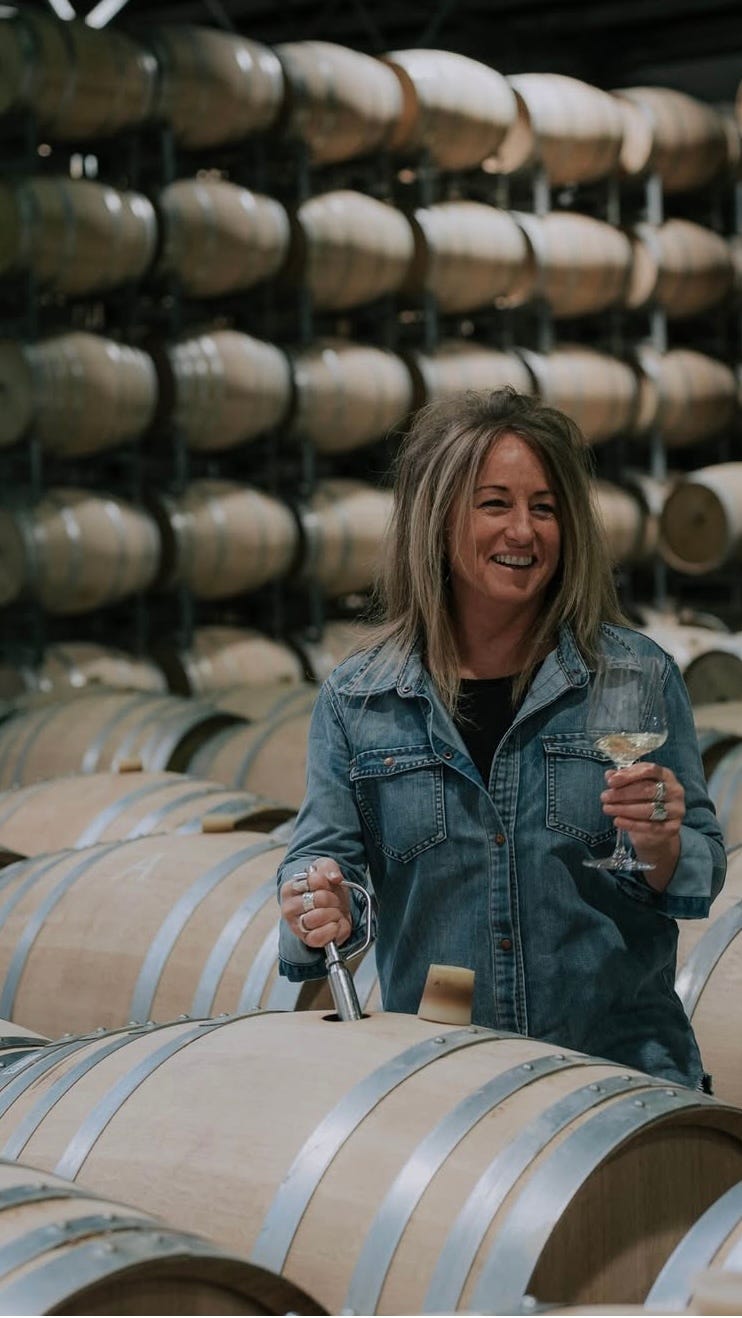
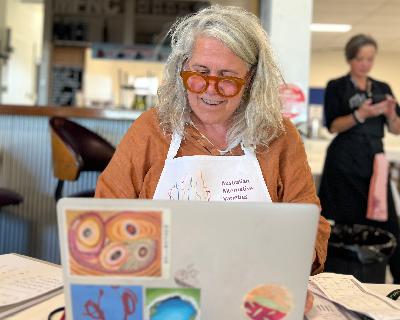
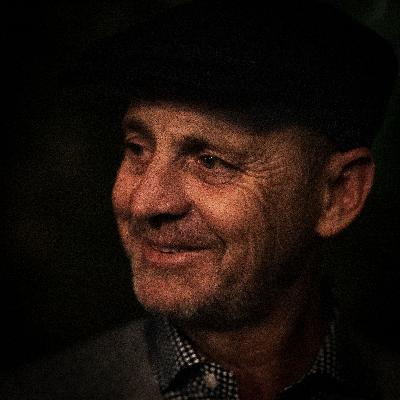
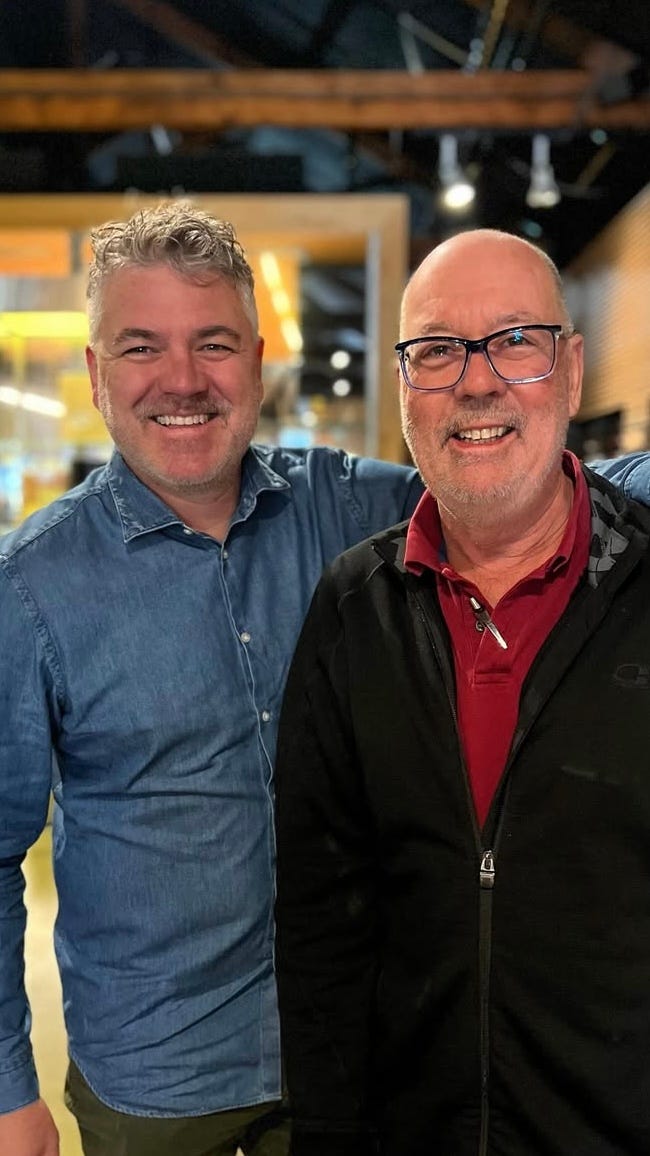

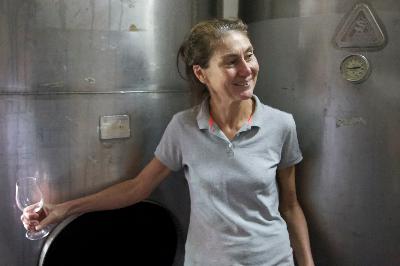
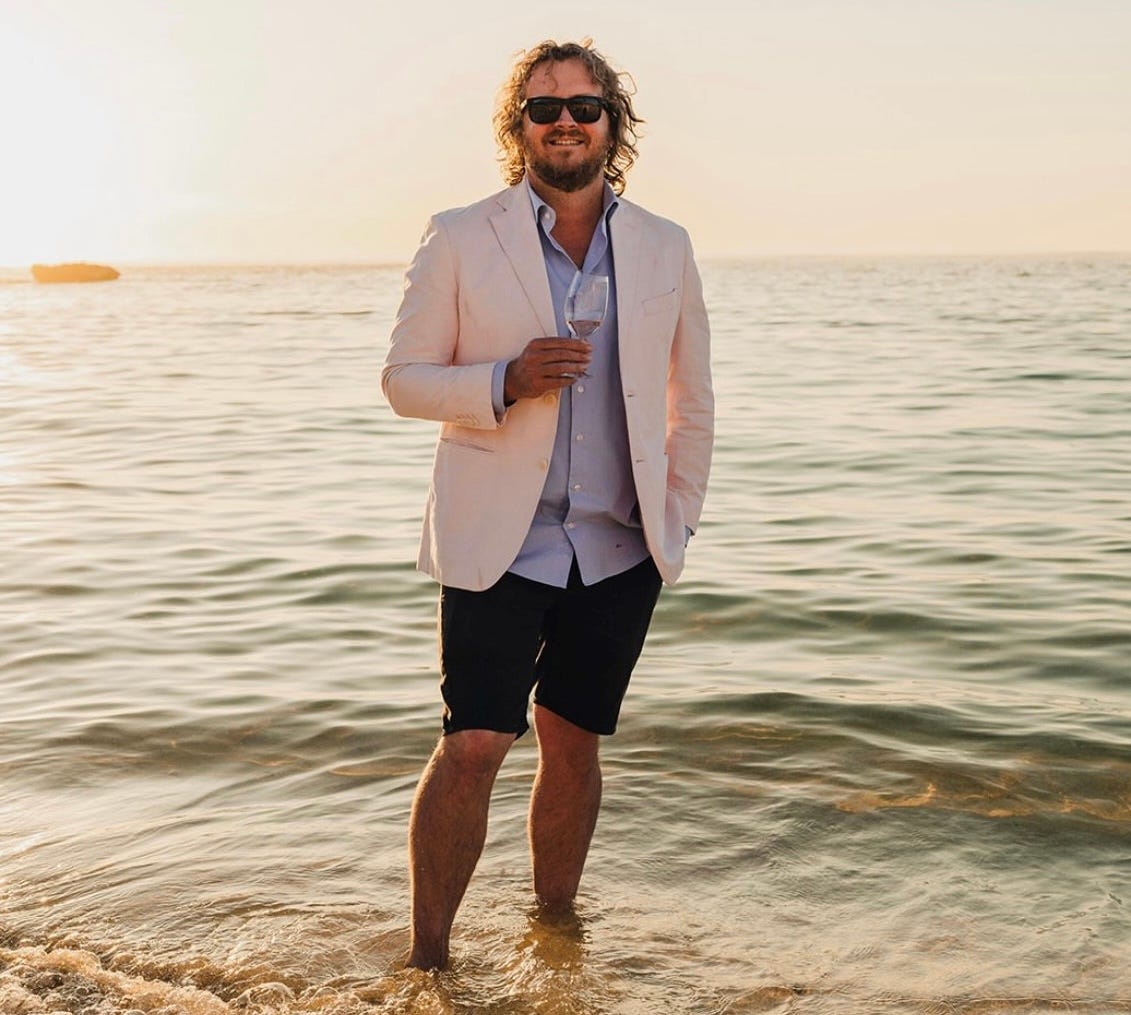
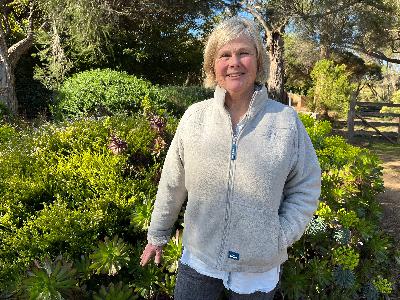
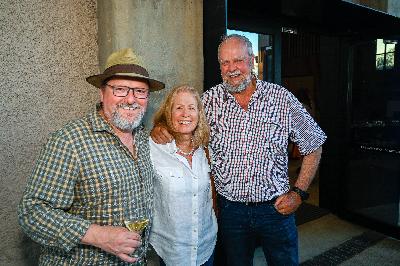
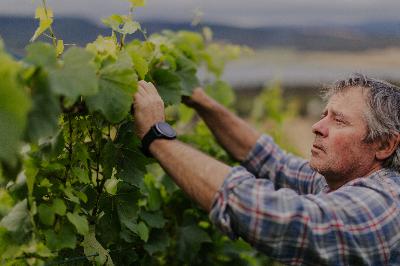
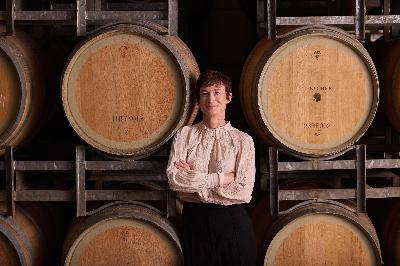
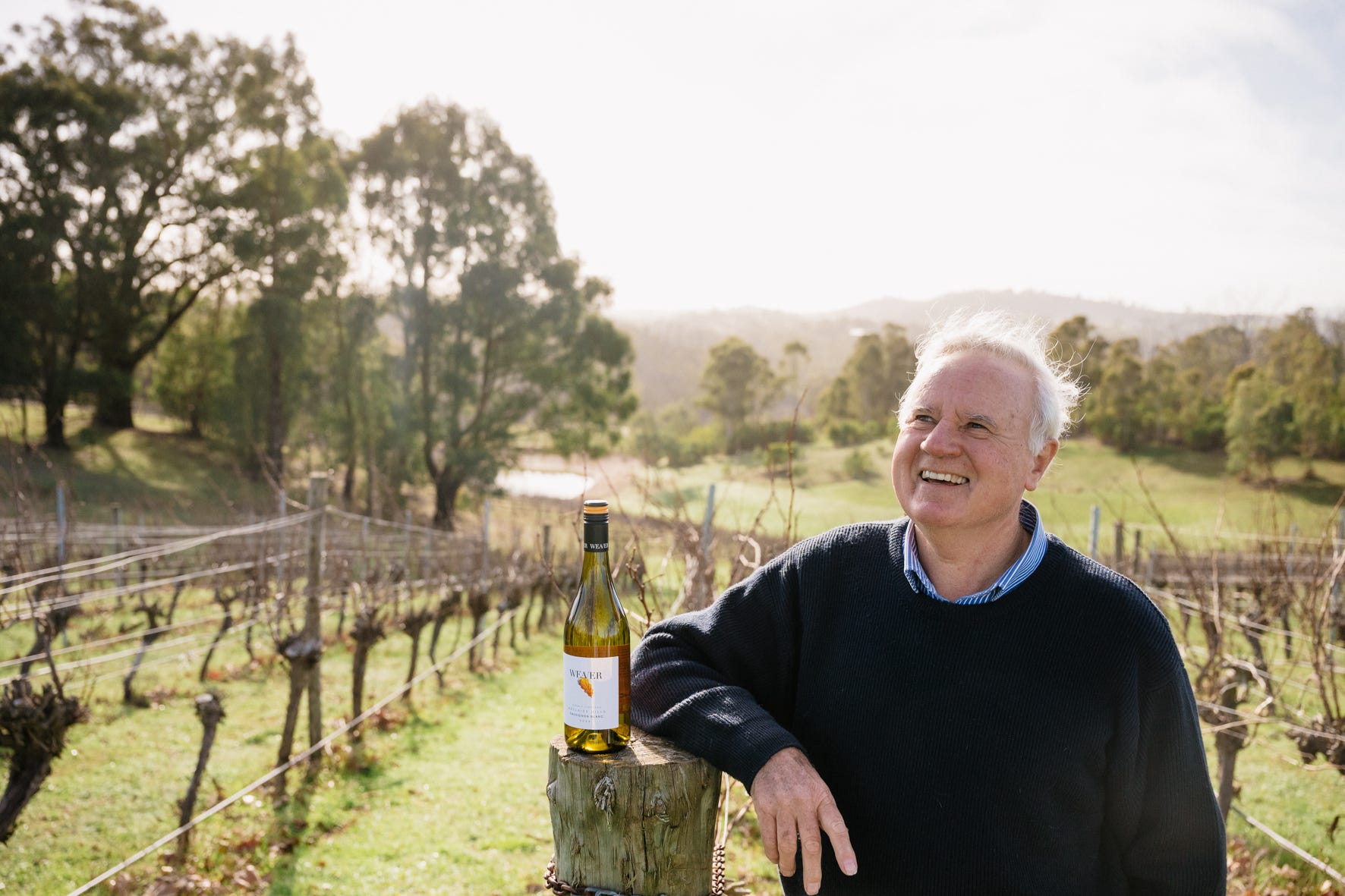
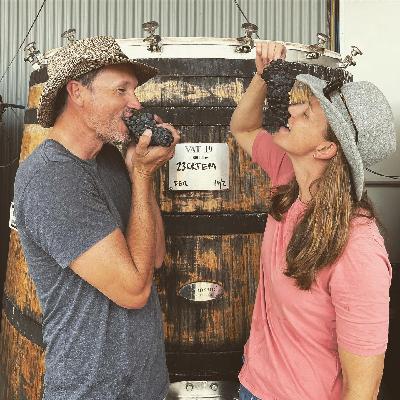
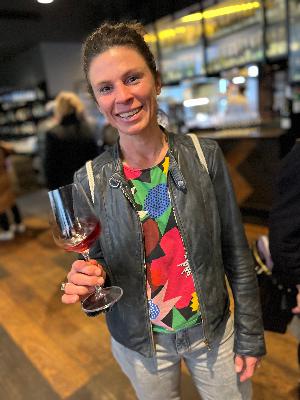
![[Hiatus] Marksist evolution: How a timeless gem is formed [Hiatus] Marksist evolution: How a timeless gem is formed](https://s3.castbox.fm/a0/9e/41/b39e6d6d339991ecb3c997fd9382ada089_scaled_v1_400.jpg)
![[Hiatus] Vaughn again: Growing and regrowing love at Sinapius [Hiatus] Vaughn again: Growing and regrowing love at Sinapius](https://substackcdn.com/feed/podcast/4111444/post/166585607/dc3ce9aa63c4d0b5219622686c7c29fc.jpg)
